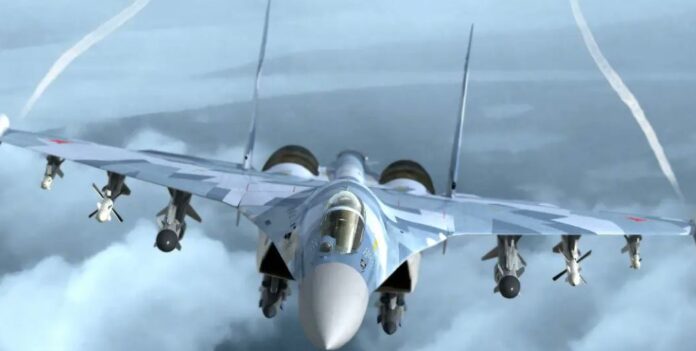In a now-familiar display of military posturing, the North American Aerospace Defense Command (NORAD) reported detecting and tracking Russian military aircraft operating within the Alaskan Air Defense Identification Zone (ADIZ) on Monday. The incident, which marks yet another in a series of similar encounters, did not escalate into a confrontation, as the Russian planes remained in international airspace and refrained from entering U.S. or Canadian sovereign territory.
NORAD, a joint U.S.-Canadian command responsible for aerospace monitoring, confirmed that the Russian aircraft were closely observed throughout their time in the ADIZ, an area extending beyond national airspace where foreign aircraft are identified and monitored for security purposes. The aircraft, which were not specified by type, exhibited no aggressive behavior and departed the zone without incident. U.S. fighter jets were not scrambled, underscoring the routine nature of the event.
Also Read: Taiwan Conducts Semiconductor Drills as Trump Tariff Looms
“This activity is not seen as a threat,” NORAD stated, emphasizing that such encounters are relatively common and reflect Russia’s ongoing efforts to project power in the region. The Alaskan ADIZ, due to its proximity to Russia’s eastern border, has frequently served as a stage for Moscow to demonstrate its military capabilities. Analysts suggest these flights are a reminder of Russia’s operational air forces, though they pose no immediate danger.
The incident comes amid heightened global tensions, with Russia’s military activities under scrutiny. While NORAD remains vigilant, officials reiterated their preparedness to respond to any potential threats. For now, the encounter serves as another chapter in the ongoing geopolitical chess game near Alaska’s shores.
Key Points: Russian Aircraft Tracked Near Alaska
- NORAD Detection: Russian military aircraft were detected and monitored within the Alaskan Air Defense Identification Zone (ADIZ) on Monday.
- No Airspace Violation: The aircraft did not enter U.S. or Canadian sovereign airspace, remaining in international territory.
- Non-Aggressive Behavior: The Russian planes exhibited no hostile actions and left the ADIZ without incident.
- Routine Monitoring: NORAD tracked the aircraft throughout, with no need to deploy U.S. fighter jets.
- Not a Threat: NORAD stated the activity is not considered a threat, viewing it as Russia’s routine display of military presence.
- Geopolitical Context: Such encounters are common near Alaska due to its proximity to Russia, reflecting ongoing power projection efforts.



